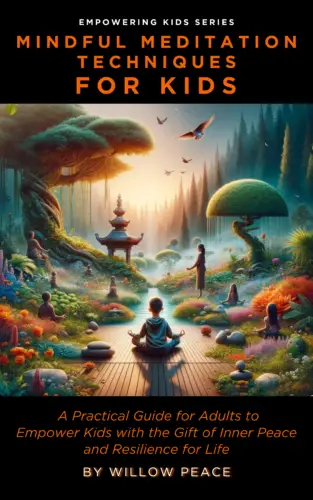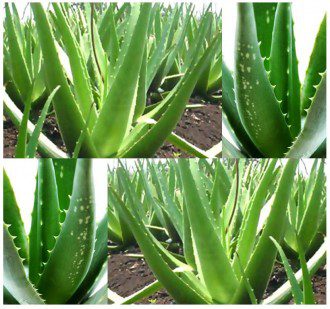Guest writer for Wake Up World
It’s no secret aloe vera is one of the most popular succulents around the world today. For thousands of years, it has been grown for a variety of uses — everything from oral health, skin benefits, and even dietary supplementation. It’s also an example of when traditional use held up to heavy scrutiny and extensive testing.
While the plant likely got its start in southern Africa, you can find it growing in parts as varied as the Mediterranean to areas of the southern U.S.[1] There’s a lot of nutrients and potential health benefits packed into this easy-maintenance plant: “over 200 different biologically active substances.”[1]
Aloe Vera in the United States Today
More and more people are using aloe vera to support their health — digestive health, skin health, you name it.[2] Take care, though, that the aloe vera you’re using doesn’t contain aloin or aloe latex (undesirable components found in the outer leaf portion) because there could be either a harsh laxative effect or drug interactions. Even still, aloe vera makes up a small part of the U.S. market when it comes to its use as a natural remedy.[3]
In the U.S., aloe vera gel is used topically to reduce the appearance of acne, as well as for all sorts of other skin care issues. It’s also used as an additive in beauty products. Many people are starting to drink aloe vera juice for its nutritional value.[4] You can even find gel from the inner leaf of the plant in many grocery stores, as it has gained popularity as an addition to smoothies. What about people from other parts of the world?
Aloe Vera in Egypt
While aloe vera might not yet be quite as well known in the U.S., Egyptians have prized the plant for over 6000 years.[5] One of the first mentions of aloe vera appears in thePapyrus Ebers around B.C. 1550, which shows 12 formulas for using aloe vera therapeutically. It proved so useful that, at one point, it was known as the “Plant of Immortality.” People would even present aloe vera as a burial gift to deceased pharaohs. It is widely believed that queens Nefertiti and Cleopatra also used aloe vera cosmetically.[5][6] Historically, some accounts indicate that the plant was even used to “treat” tuberculosis. [7] The ancient Egyptians were not the only ones who had a long history of using aloe vera in unique ways.
Aloe Vera in India
As early as B.C. 600, there’s record of Arab traders bringing aloe vera (which they called “desert lily”) to India. Arabs were already separating the inner gel and sap from the outer rind, even grinding the leaves into powder, and this was highly valued; in fact, records from as early as the 17th century show the East India Trading Company relied heavily on aloe for its commercial value. Moving along through history, it’s even mentioned by one of the great religious figures, Mahatma Gandhi, in response to the question of how he maintained his strength while fasting: “You ask me what were the secret forces which sustained me during my long fasts. Well, it was my unshakable faith in God, my simple and frugal lifestyle, and the Aloe whose benefits I discovered upon my arrival in South Africa at the end of the 19th century.” And, like in the U.S., aloe juice products are becoming increasingly popular in India, with anticipated benefits including high vitamin and mineral content, adaptogenic properties, digestive support, and detoxification.
Aloe Vera in Ancient Greece
The first recorded mention of aloe in Greek culture was made by the physician, Aulus Celsus, who focused exclusively on aloe as a purgative. Further mention is made in the text “Greek Herbal” by Pedanius Dioscorides, who notes the sap, not the gel, is the healing agent, and that the more bitter the sap, the more effective. He also comments aloe vera induces sleep, cleanses the stomach, has skin benefits, stops hair loss, and has several other benefits. Greek scholars and doctors alike continued to confirm and expound upon its use throughout history and even up into modern times.
Aloe Vera Usage Across Asia
As early as B.C. 400, the aloe vera plant and processed aloe products were being traded throughout Asia. By 700-800 AD, the Chinese “Materia Medicas” noted its medical benefits, referring to the plant as “Lu-hui” (black deposit) because of its bitter taste. Ever since then, aloe use has swept throughout China, as well as the entire continent of Asia. A group from Tokyo Women’s Medical College has conducted some of the leading research on a lectin found in aloe vera that help supports the immune system.[8] There’s even a popular Japanese yogurt line that uses aloe as one of its key ingredients!
Aloe Names from Around the World
With such amazing uses, aloe vera has earned nicknames from all around the globe–names like the “silent healer”, “burn plant”, “ghai kunwar”, “elephant’s gall”, “isha irazu”, “cape aloe”, the “medicine plant”, and the “first aid plant”. And, while there are lots of other aloe species, none are so heavily utilized as aloe vera.
The Future of Aloe Vera in the United States
As aloe continues to grow in popularity in the U.S, many Americans are educating themselves about natural remedies and the health benefits of improving their nutrition. As more and more aloe products arrive on the market—gels, lotions, creams, juices, and capsules—it’s easier than ever to access the benefits of aloe vera. And, because aloe plants are so easy to care for, more people are growing their own. But, remember, always use caution when consuming fresh aloe. Certain parts of the leaf contain compounds called aloin and aloe latex which will likely cause a pretty severe state of gastric distress. The best thing you could do to maximize the benefits from aloe would be to take a high-quality aloe vera supplement like Aloe Fuzion™. Aloe Fuzion is an incredibly effective aloe vera supplement because it is made from 100% organic inner leaf aloe vera powder. It has the highest acemannan content available today to ensure that you get the most benefit from aloe vera supplementation.
Are you considering an aloe vera supplement? Tell us about your decision in the comments below!
Article References:
[1] Radha, M. H. & Laxmipriya, N.P. Evaluation of biological properties and clinical effectiveness of Aloe vera: A systematic review. Journal of Traditional and Complementary Medicine. 5 (1).
[2] Medline Plus. Aloe. U.S. National Library of Medicine.
[3] Centers for Disease Control and Prevention. Therapeutic Drug Use. U.S Department of Health & Human Services.
[4] Foster, M. et al. Evaluation of the Nutritional and Metabolic Effects of Aloe vera. In I. Benzie & G. Wachtel-Galor (Eds.), Herbal medicine: Biomolecular and clinical aspects (2nd ed.).
[5] National Center for Complementary & Integrative Health. Aloe Vera. U.S Department of Health & Human Services.
[6] Surjushe, A. et al. Aloe Vera: A Short Review. Indian Journal of Dermatology. 53 (4).
[7] Gupta, R. et al. Anti-tuberculosis activity of selected medicinal plants against multi-drug resistant Mycobacterium tuberculosis isolates. The Indian Journal of Medical Research. 131.
[8] Imanishi, K. Aloctin A, an active substance of Aloe arborescens Miller as an immunomodulator. Phytotherapy Research. 7 (7).
Previous articles by Dr. Group:
- The 9 Best Fermented Foods for Your Gut
- 14 Foods that Cleanse the Liver
- How Turmeric Keeps You Looking Young
- 7 Toxins Harming Your Brain Right Now
- Top 5 Foods for the Pineal Gland
- 6 Things You Must Know About Colloidal Silver
- The Importance of a Kidney Cleansing Diet
- The 9 Best Herbs for Lung Cleansing and Respiratory Support
- 7 Best Foods to Support Kidney Function
- Lung Cleansing With Peppermint Oil
- How Fluoride Damages Pineal Gland Health
About the author:
 Dr. Edward F. Group III (DC, ND, DACBN, DCBCN, DABFM) founded Global Healing Center in 1998 and is currently the Chief Executive Officer. Heading up the research and development team, Dr. Group assumes a hands-on approach in producing new and advanced degenerative disease products and information.
Dr. Edward F. Group III (DC, ND, DACBN, DCBCN, DABFM) founded Global Healing Center in 1998 and is currently the Chief Executive Officer. Heading up the research and development team, Dr. Group assumes a hands-on approach in producing new and advanced degenerative disease products and information.
Dr. Group has studied natural healing methods for over 20 years and now teaches individuals and practitioners all around the world. He no longer sees patients but solely concentrates on spreading the word of health and wellness to the global community. Under his leadership, Global Healing Center, Inc. has earned recognition as one of the largest alternative, natural and organic health resources on the internet.
For more information, please visit Global Healing Center.
Disclaimer:†Results may vary. Information and statements made are for education purposes and are not intended to replace the advice of your doctor. Neither Global Healing Center nor Wake Up World dispense medical advice, prescribe, or diagnose illness. The views and nutritional advice expressed by Global Healing Center and Wake Up World are not intended to be a substitute for conventional medical service. If you have a severe medical condition or health concern, see your physician.
Many people today are burdened by stress, anxiety, and physical symptoms. The good news is that you don’t have to stay stuck. By connecting with the healing power of your heart, you can transform your life, dissolve emotional blockages, and create a sense of peace and abundance.
Join this free online event to learn how to access the four levels of consciousness within your heart. Discover how combining modern science with ancient wisdom can help you release fear, grief, and pain and open the door to profound healing.
Take action now and sign up for this transformative event. Unlock your heart’s potential for self-healing and experience a life of joy and fulfillment. RSVP for free here.
 If you’ve found value in our articles, we’d greatly appreciate your support by purchasing Mindful Meditation Techniques for Kids—A Practical Guide for Adults to Empower Kids with the Gift of Inner Peace and Resilience for Life.
If you’ve found value in our articles, we’d greatly appreciate your support by purchasing Mindful Meditation Techniques for Kids—A Practical Guide for Adults to Empower Kids with the Gift of Inner Peace and Resilience for Life.
In the spirit of mindfulness, we encourage you to choose the paperback version. Delve into its pages away from screen glare and notifications, allowing yourself to fully immerse in the transformative practices within. The physical book enriches the learning process and serves as a tangible commitment to mindfulness, easily shared among family and friends.
Over the past few years, Wake Up World has faced significant online censorship, impacting our financial ability to stay online. Instead of soliciting donations, we’re exploring win-win solutions with our readers to remain financially viable. Moving into book publishing, we hope to secure ongoing funds to continue our mission. With over 8,500 articles published in the past 13 years, we are committed to keeping our content free and accessible to everyone without resorting to a paywall.








